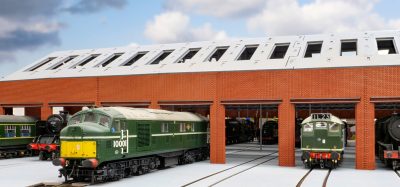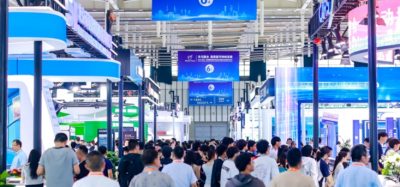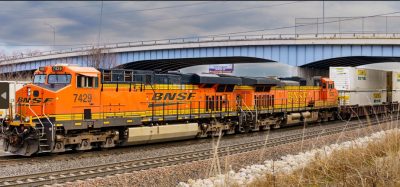Turkey’s continuing developments
Posted: 11 April 2012 | | No comments yet
The history of railways in Turkey can be analysed in four periods. First was the Ottoman Period between 1856 and 1922 when foreigners were granted concessions and 4,136km of railway lines were constructed. Second was the Republic Period between 1923 and 1950 when developments were fast and bright and 3,764km of railway lines were constructed (approximately 134km annually) and the railway transportation share was 68% for passenger and 42% for freight. Third was the Negligence Period between 1950 and 2003 when only 945km of railway lines were constructed in total over the 52 years. The fourth period is from 2003 onwards when the railways were re-granted a well-earned prominence. The main focus of this article shall be the period after 2003.
After 52 years of negligence, railway con – struction in Turkey has considerably increased since 2003. After railway construction was made a state policy, the following four activity points were set:
The history of railways in Turkey can be analysed in four periods. First was the Ottoman Period between 1856 and 1922 when foreigners were granted concessions and 4,136km of railway lines were constructed. Second was the Republic Period between 1923 and 1950 when developments were fast and bright and 3,764km of railway lines were constructed (approximately 134km annually) and the railway transportation share was 68% for passenger and 42% for freight. Third was the Negligence Period between 1950 and 2003 when only 945km of railway lines were constructed in total over the 52 years. The fourth period is from 2003 onwards when the railways were re-granted a well-earned prominence. The main focus of this article shall be the period after 2003. After 52 years of negligence, railway con - struction in Turkey has considerably increased since 2003. After railway construction was made a state policy, the following four activity points were set:
The history of railways in Turkey can be analysed in four periods. First was the Ottoman Period between 1856 and 1922 when foreigners were granted concessions and 4,136km of railway lines were constructed. Second was the Republic Period between 1923 and 1950 when developments were fast and bright and 3,764km of railway lines were constructed (approximately 134km annually) and the railway transportation share was 68% for passenger and 42% for freight. Third was the Negligence Period between 1950 and 2003 when only 945km of railway lines were constructed in total over the 52 years. The fourth period is from 2003 onwards when the railways were re-granted a well-earned prominence. The main focus of this article shall be the period after 2003.
An assessment of the 2003-2011 period
Investments
After 52 years of negligence, railway con – struction in Turkey has considerably increased since 2003. After railway construction was made a state policy, the following four activity points were set:
- Construction of high-speed lines, primarily along the core high-speed line network
- Refurbishment of existing tracks and vehicle fleets and connecting the existing railway network to production centres and ports
- Creation of a national railway industry in cooperation with the private sector
- Making Turkey an important logistics hub in the region through the construction of logistic centres.
The importance of modernising the Turkish rail network is proved by the allocation of funds – in 2003, funding was allocated at 235 million TL; in 2011 this increased to 3,414 million TL:


Change in investment allocations for the railway sector
This large jump in investment allocation was to enable several projects, as indicated in the 9th Development Plan, to be completed alongside the aims to achieve goals such as providing seamless and integrated high-speed line services in Turkey by 2023, as well as door-todoor freight transportation services and tripling the passenger and freight railway market share through the establishment of efficient urban transportation infrastructure.
Ongoing and completed projects – high-speed lines
The 9th Development Plan prioritised establishing a core high-speed network made up of Istanbul-Ankara-Sivas, Ankara-Afyon-Izmir and Ankara-Konya corridors, with Ankara being the hub of these corridors. The following highspeed line projects are included in this plan:
Ankara-Istanbul
The objectives of the Ankara-Istanbul highspeed line project are to decrease the travel time between Ankara and Istanbul, to provide faster, more comfortable and safer transportation, and to increase the railway’s transportation market share. In the framework of the Ankara-Istanbul high-speed line project, an electrified and signal-equipped double-track railway line suitable for speeds up to 250km/h between the two cities will be constructed and the distance between Ankara and Istanbul will be decreased from 576km to 533km; thereby reducing the travel time from seven to three hours.
The first phase of the project – constructing 206km of line between Ankara and Eskişehir – was commissioned on 13 March 2009. Thanks to this new line, the travel time between Ankara and Istanbul has reduced to 5 hours 30 minutes. The construction works for the second phase of the project between Eskişehir and Köseköy are underway with 50% of the work already completed. This 150km line section is in one of the harshest geographical regions in Turkey – 33 tunnels (55km in total) and 22 viaducts (15km in total) will have to be constructed.
The construction of the section between Köseköy and Gebze, which will provide a link from the Ankara-Istanbul high-speed line project to the Marmaray Project, is being carried out thanks to funding secured from the Instrument for Pre-Accession Assistance (IPA) of the European Union for railway infrastructure. The contracts for this construction were concluded on 14 October 2011 and work was started.
The Ankara-Istanbul high-speed line project is expected to be fully completed in 2013.
Ankara-Konya
The 306km Ankara-Konya high-speed line project has been developed with an aim to connect Konya to Istanbul and Ankara. The construction works, which were initiated in April 2006, were concluded in August 2011 and the line was commissioned on 24 August 2011.
When the Ankara-Istanbul high-speed line project is completed, the travel time between Ankara and Konya will be reduced from 10 hours and 30 minutes to 1 hour and 15 minutes, and the travel time between Istanbul and Konya will be reduced from 12 hours and 25 minutes to 3 hours and 30 minutes.
Ankara-Sivas
The Ankara-Sivas high-speed line project aims to create an east-west axis, to shorten the length of the line by 141km and to reduce the travel time from 12 hours to approximately three hours by constructing a new high standard, signalequipped, electrified and double-track 405km high-speed line.
The foundation of the 151km Yerköy-Sivas line section, planned to be constructed within the first phase, was laid on 14 March 2009 and the infrastructure works are in progress. The construction works for the Ankara (Kayaş) and Yerköy section, the second phase of the project of 174km, shall be started after the preparation of final drawings.
Bursa-Bilecik
This project has been developed with the intent to connect Bursa, a city deprived of a railway connection, to the main railway network and to form the Bursa-Ankara and Bursa-Istanbul high-speed line projects. The construction works between the Bursa and Yenişehir line section of 75km, the first phase of the project, are currently underway.
Sivas-Erzincan
For the Sivas-Erzincan high-speed line project, which was included in TCDD’s 2011 Investment Programme, an alternative route of 235km has been identified and the studies for the project have been initiated.
High-speed train sets
The services between Ankara-Eskişehir and Ankara-Konya are operated by 12 high-speed train sets. These sets, which are formed of six cars, can be operated at speeds up to 250km/h and have a capacity for 419 people.
Other railway projects
Turkey-Georgia (Kars-Tbilisi) railway construction
With construction of the Turkey-Georgia railway network, a seamless railway connection is planned between Turkey and Georgia, Azerbaijan and Central Asian Turkic Republics by reviving the historical Silk Road and thereby improving economic and cultural cooperation between the countries. Eighty-five per cent of construction work has been completed so far.
Marmaray Project
The Marmaray Project is the rehabilitation of the suburban railway system of Istanbul and the construction of the Istanbul Strait Tube Tunnel Railway Crossing in order to connect Gebze, a province on the Asian side and Halkalı, a province on the European side by a seamless, modern and high-capacity suburban railway system.
The total length of the railway system is 76km, with a 1.4km immersed tube tunnel, 12.2km approaching tunnels and approximately 63km of surface subway line to be rehabilitated. Within the scope of the project, the works to be implemented cover the construction of three new underground stations and the renewal of 37 stations, turning them into modern stations. Apart from that, the present double-track railway line will be tripled; high-capacity suburban trains will be operated on doubletrack between Asia and Europe and the third line will be utilised by the intercity passenger and freight trains. The tube tunnel will effectively function in the establishment of the connection of Turkey with the Trans-European Network providing a seamless link between Asia and Europe.
The Marmaray Project will not only positively affect daily traffic in Istanbul but also will have a pivotal role in the development of the city and region.
Ankara high-speed train station
The idea behind the Ankara high-speed train station is to have a structure befitting Ankara, the capital of Turkey, to improve the prestige and sustainability of our Ministry and TCDD. The structure of the station will meet all requirements of the passengers, and will form a new attraction centre in Ankara with units such as a shopping centre, cafeterias, offices and a hotel. The Ankara high-speed train station will be constructed by a PPP model. The works for tender preparation are on-going.
Track renewal and procurement of 125,000 tonnes of rail
Together with the implementation of highspeed line projects, the renewal of existing lines has come into prominence. Over 6,500km of line was renewed and maintained between 2003 and 2009. For the first time, 60kg/m rails and B 70 concrete sleepers were used.
The renewal, maintenance and repair of existing lines will require 250,000 tonnes of rails. The first 125,000 tonnes has been provided by a loan secured by the Islamic Development Bank. Apart from 125,000 tonnes of rail, KARDEMİR (Karabük Iron and Steel Plant) provided 257,538 tonnes of rail for track renewal and maintenance works between 2003 and 2011. Thus, it has become possible to procure rail which was once a basic material of the railway sector imported from domestic markets.
Provision of 89 DE mainline locomotives
TÜLOMSAŞ, one of the affiliated companies of TCDD, manufactured 89 diesel mainline locomotives with 51% local contribution under GM license between 2003 and 2009.
Procurement of 80 electrical mainline locomotives
In order to renew a worn-out vehicle fleet and to meet freight transportation requirements, procurement plans are in place for 80 electrical mainline locomotives. The funding of the project was secured by the Islamic Development Bank and locomotive design works commenced at the end of 2010.
Procurement of 32 suburban train sets
The delivery of 32 suburban train sets, which are formed of three cars, to be operated on the Ankara suburban line between Sincan and Kayaş was received at the end of 2009 and these train sets were put into service. Their maximum speed is 140km/h and can hold 747 passengers.
Procurement of 12 diesel train sets (DMU)
Twelve DMUs to be utilised in short-distance intercity passenger transportation have been procured by funding secured from the European Investment Bank. The first local diesel train set has been manufactured by TÜVASAŞ, a TCDD-affiliated company, in line with the 84 DMU Train Sets Production Project included in the investment programme.
Procurement of 65 mobile track maintenance vehicles and seven emergency rescue vehicles
Sixty-five railway maintenance and repair vehicles which can run on both rail and road have been put into operation. These comfortable vehicles which house all kinds of equipment onboard plus an air-conditioning system have speeded up the transfer of maintenance and repair staff to sites and increased work efficiency. The number of emergency rescue vehicles increased from seven to 19, with the addition of 12 vehicles in 2009.
Rolling stock production and modernisation
With the intent to empower TCDD’s passenger rolling stock fleet, 155 passenger coaches were produced in the affiliated companies in Eskişehir and Sivas between 2003 and 2011, along with 5,205 freight wagons. These additions have served to increase the share of railways in freight transportation and taken into account customers’ demands and technological developments.
Conversion of non-controlled level crossings into controlled level crossings
A significant majority of accidents and incidents in railway operations occur on level crossings. The accident rate at level crossings on our lines experienced a sharp drop in 2010 in comparison to 2000 thanks to works such as upgrading level crossings and converting noncontrolled level crossings into controlled level crossings. Between 2003 and 2011, 3,350 level crossings were upgraded and 518 non-controlled level crossings were converted into controlled level crossings.
Establishment of logistic centres
The objective of developing logistic centres is to re-build specific important freight stations in areas which are particularly close to organised industrial zones and have efficient road access and freight potential, and are in the nature to fulfill freight logistic requirements in line with technological and economic developments. These are: Halkalı, Yeşilbayır (Istanbul), Köseköy (Kocaeli), Boğazköprü (Kayseri), Gelemen (Samsun), Hasanbey (Eskişehir), Bozüyük (Bilecik), Gökköy (Balıkesir), Yenice (Mersin), Palandöken (Erzurum), Kayacık (Konya) and Uşak.
Installation of signalling and electrification facilities
There are currently a number of projects to install signalling and electrification facilities, including:
- The Boğazköprü-Ulukışla-Yenice, Mersin- Yenice, Adana-Toprakkale signalling project
- The Irmak-Zonguldak electrification and signalling project
- The Pehlivanköy-Uzunköprü-Hudut signalling, electrification and telecommunication project
- The Eskişehir-Kütahya-Balıkesir signalling, electrification and telecommunication project
- The Bandırma-Balıkesir-Manisa-Menemen signalling, electrification and telecommunication project
- The Kayaş-Irmak-Kırıkkale-Çetinkaya electrification and infrastructure rehabilitation project
Development of domestic railway industry
One of the significant steps to be taken in order to develop the railway sector in Turkey is to improve the domestic railway industry. The projects realised accordingly in cooperation with third parties include:
- A factory was established in Sakarya in order to manufacture high-speed train sets and modern metro vehicles and started production
- Kardemir continues to manufacture domestic rails
- The production of sleepers by private sector is ongoing in Pamukova
- The production of high-speed line sleepers was launched in the facilities established in Konya, Ankara and Afyon and the production of the rail fastenings was started with joint venture between domestic and foreign collaboration in Erzincan
- The works to establish a factory by MKEK (Mechanical and Chemical Industry Corporation) in order to produce to monobloc wheels and wheel set have been started
- The Switch Plant was established in Çankırı with PPP and the Sleeper Plant was founded in Sivas (with partnership of VEA (Austria)+ KARDEMIR and the participation of TCDD).
Vision 2023
The year 2023 marks the 100th anniversary of the foundation of the Republic of Turkey, and has been selected as the target year for Turkey’s vision. As a consequence of the determination of the vision, the future profile of Turkey is put forward in a wide framework ranging from transportation, agriculture, education and information technologies to foreign investments and policy, sustainable develop – ment, urban planning, EU membership and the use of alternative energy resources.
The railway sector, which is gaining increasing significance in line with the requirements on safety, environment, energy and economy, shall provide the necessary contribution for the vision established in parallel with these developments. In order to meet the transportation and infrastructure requirements of 2023, the new lines shall be constructed, the existing infrastructure and vehicles shall be renewed and the integration with other transportation modes shall be provided in line with the developing technologies. Accordingly, it shall be possible to render services on the basis of ‘high quality-life standard’.
Turkey is envisaged to be among the 10 largest economies in the world by 2023, and the aim is to have a railway share of 10% for passenger transportation and 15% for freight transportation, among the other modes. In order to achieve these targets, it is intended to extend the existing railway network and improve the line standards. In this direction, the construction of high-speed and conventional lines shall be accelerated.
Ten thousand kilometres of high-speed lines planned to be constructed shall be the driving force for increasing passenger transportation. For instance, according the results of a survey performed in 2010, the railway share between Ankara and Eskisehir has increased from 8% to 72% with the high-speed line operation. On the other side, it is well-known that the high-speed lines have gained a significant advantage over air and road transportation in terms of competition and a 45-85% share in the passenger transporta – tion between major cities in Spain, France, Italy and Germany1. Given this momentum, we believe it is possible to gain a 10% share determined as the target in passenger transportation and even exceed it. The high speed lines to be constructed on east-west and north-south transportation corridors of Turkey with a view to ensuring comfortable, reliable and fast transportation and connecting the major cities and tourism regions to one another shall primarily render services for passenger transportation.
Since Turkey is both a transit country and a departure and destination point of transportations, it plays a significant role in the transportation sector. The importance of the country in terms of its geographic position can be reflected on the development of country only if the infrastructure requirements are met on transit networks and a strong integration among the transportation modes is ensured. As a part of the transportation system, railways can contribute to this process by modernising the existing networks and whole infrastructure and strengthening the network with the new lines to be constructed. Also, the passenger transportations on the conventional lines shall be reduced as a consequence of the construction of highspeed lines and the excess capacity to be generated shall primarily be used for freight transportation. On the other hand, it shall be ensured to carry the goods, which can be transported by high speeds, on the high speed lines. By 2023, 4,000km of new conventional line will be constructed and the following measures shall be taken to carry more goods on international freight corridors:
- Initially the quality of the existing infrastructure shall be improved, the missing links on the corridors shall be completed, and the ongoing works shall be finalised
- The compulsory waiting periods on the border crossing points shall be reduced and the customs procedures shall be accelerated
- A customer-oriented, flexible and dynamic tariff system which is compliant with the market shall be established
- The bottlenecks resulting from the different gauges shall be removed
- The transportation legislation and law shall be harmonised
- The consignor companies shall be correctly notified of transportation costs, tariffs, transportation times, vehicle monitoring, etc. in time.
In addition to these points, a 15% share determined as the target for railways for freight transportation together with the integration to be ensured with the other transportation modes shall be obtained in our country.
Conclusion
The railway network in Turkey is important for economic development and its heritage is not just for the people who work on the railways or the decision-makers of the owners, but also for the Republic of Turkey as a whole.
To hand over this heritage to the next generations is vitally important and TCDD is constructing the new lines and building highspeed lines with this enthusiasm. With industry support, all forthcoming projects will be executed with determination so that the Turkish railway network can reach the level it deserves.
Reference
1. ‘High Speed Rail: UIC 2008’
About the author
Süleyman Karaman graduated from the Mechanical Engineering Faculty of Istanbul Technical University (ITU) in 1978. In 1981 he took his master degree at the same university and he received a Mechanical Engineer MSc title with high degree. Following this, Mr. Karaman carried out some studies concerning farming machinery, took up a short-term military post and worked for an automotive company. Then in 1994 he was appointed as Deputy Director General of IETT (Istanbul Public Transport Authority) where he took part in many projects – one of which was the implementation of Smart Tickets. Mr. Karaman became Director General and Chairman of the Board of Turkish State Railways (TCDD) in January 2003.
Issue
Related topics
Diesel Locomotives, High-Speed Rail, Rolling Stock Orders/Developments, Track Construction, Track/Infrastructure Maintenance & Engineering








